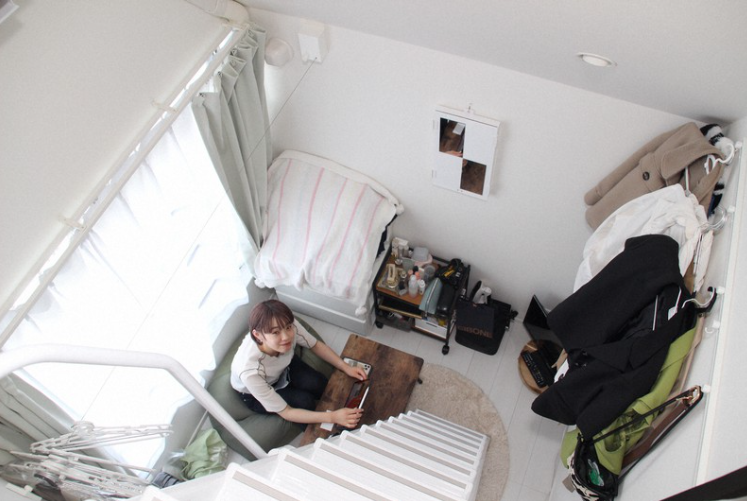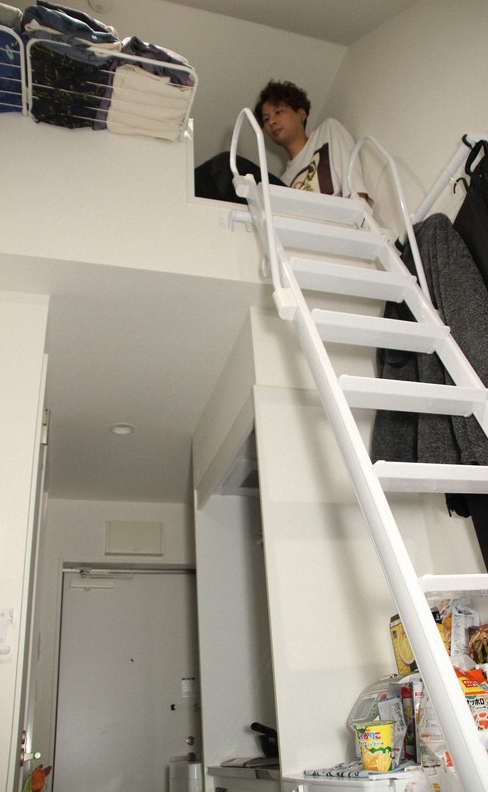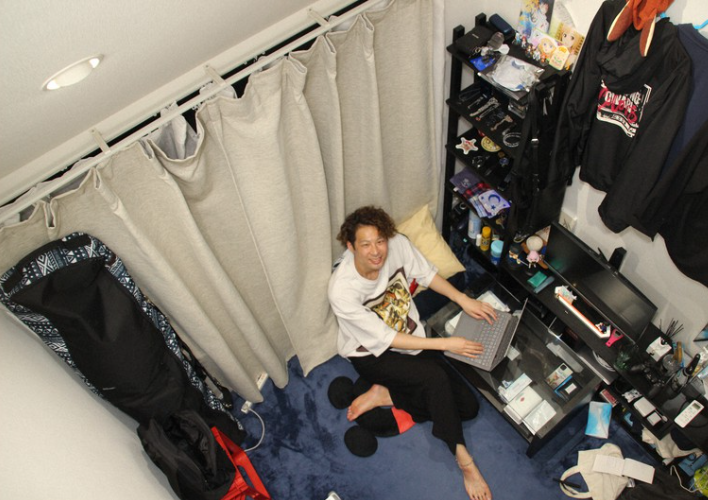TOKYO -- "Tiny apartments" in central Tokyo less than half the size of a typical 20-square-meter studio apartment are booming among young people in Japan. What is the secret behind their popularity?
A modern-looking two-story apartment building with a white exterior stands in a quiet residential area of Tokyo's Shinjuku Ward. The common hallway is narrow, and the entrance of each apartment can fit just three pairs of shoes. The total floor space of each apartment, including the living space just three tatami mats in size, is only 9 square meters. The inside, however, does not feel confined -- perhaps due to the white walls and the 3.6-meter-high ceilings. A ladder in the living room leads to an attic-like loft that can be used as a sleeping or storage area.

"My workplace is just a 30-minute walk away. The convenience is irreplaceable," said an office worker, 30, who has lived in the apartment for a year and a half.
In addition to the good location, he was attracted by the low initial cost with zero deposit and key money, and rent of 74,500 yen (about $560), which is 20,000 to 30,000 yen lower than the rental market value in the area.
The bathroom has only a shower, and he brushes his teeth and washes his face in the kitchen. Still, he says he he doesn't mind the small space because he spends most of his time in the apartment playing games and goes up to the loft when he sleeps.

Spilytus Co., the Tokyo-based real estate company that handles this property, has about 100 rental apartment buildings with each apartment the size of "three tatami mats and a loft" near train stations in popular areas of Tokyo such as Shinjuku, Ebisu, and Meguro. The occupancy rate of its approximately 1,500 apartments is 98%. Sixty-five percent of the residents are men and 35% women, with 80% of them in their 20s and 30s.
A 23-year-old hairdresser who has similarly lived in a tiny apartment in central Tokyo for over a year said, "It's smaller than my room at my parents' house, but since living here, it hasn't bothered me. It' s nice that I can easily reach everything."

Spilytus offered its first tiny property in September 2015. President Keisuke Nakama, 35, used to commute more than an hour to work. He thought, "For young people who are dedicated to their work, there may be a need for properties that are small but comfortable to live in and close to their place of work." He accordingly came up with a business model to provide as many rooms as possible in a limited lot.
With its unique know-how, the company managed to increase the number of tiny properties to approximately 100 buildings in a little over 6 1/2 years. First, it purchases the land and decides on the layout of the building, then recruits wealthy individuals who want to build assets through apartment management as owners. After completion of the building, it provides management support.

In Japan, a typical studio apartment is around 20 square meters, which is more than double the size of a tiny apartment. For the owner, the rent per room for tiny apartments is lower, but the total income becomes higher because the number of apartments is almost double the normal figure.
One man in his 50s from Aomori Prefecture who owns two of the company's tiny apartment buildings said, "The yield is good, and they're located in one of Tokyo's prime areas that everyone has heard of. I had the feeling that if I were younger, I would want to live there myself."
In its basic plan for housing and living standards, the Japanese government indicates that the "size required for a healthy and cultured living environment" is 25 square meters for a single-person household. In 2020, real estate information service company At Home Co. asked 414 working people in their 20s nationwide about the size of a house in which a single working adult could live happily. A total of 53.4% of the respondents answered they could still live happily in a space of "20 square meters or less."
Nakama commented, "The coronavirus pandemic has reduced the demand from college students, who are taking more online classes, but there has been no change in the high demand from young workers who want to live in the city center where they can enjoy the convenience."
He predicted the continuation of the "tiny apartment boom" in the future, saying, "As real estate prices in central Tokyo continue to rise, there is also a high level of interest among individual investors."







